-
EXECUTIVE SUMMARY
-
Market Overview
-
Key Findings
-
Market Segmentation
-
Competitive Landscape
-
Challenges and Opportunities
-
Future Outlook
-
MARKET INTRODUCTION
-
Definition
-
Scope of the study
- Research Objective
- Assumption
- Limitations
-
RESEARCH METHODOLOGY
-
Overview
-
Data Mining
-
Secondary Research
-
Primary Research
- Primary Interviews and Information Gathering Process
- Breakdown of Primary Respondents
-
Forecasting Model
-
Market Size Estimation
- Bottom-Up Approach
- Top-Down Approach
-
Data Triangulation
-
Validation
-
MARKET DYNAMICS
-
Overview
-
Drivers
-
Restraints
-
Opportunities
-
MARKET FACTOR ANALYSIS
-
Value chain Analysis
-
Porter's Five Forces Analysis
- Bargaining Power of Suppliers
- Bargaining Power of Buyers
- Threat of New Entrants
- Threat of Substitutes
- Intensity of Rivalry
-
COVID-19 Impact Analysis
- Market Impact Analysis
- Regional Impact
- Opportunity and Threat Analysis
-
NEXT GENERATION BATTERIES MARKET, BY TECHNOLOGY (USD BILLION)
-
Solid-State Batteries
-
Lithium-Sulfur Batteries
-
Lithium-Air Batteries
-
Sodium-Ion Batteries
-
NEXT GENERATION BATTERIES MARKET, BY APPLICATION (USD BILLION)
-
Electric Vehicles
-
Energy Storage Systems
-
Consumer Electronics
-
Industrial Applications
-
NEXT GENERATION BATTERIES MARKET, BY END USE (USD BILLION)
-
Transportation
-
Residential
-
Commercial
-
Utilities
-
NEXT GENERATION BATTERIES MARKET, BY CHEMISTRY (USD BILLION)
-
Lithium-Ion
-
Nickel-Metal Hydride
-
Lead-Acid
-
Zinc-Air
-
NEXT GENERATION BATTERIES MARKET, BY REGIONAL (USD BILLION)
-
North America
- US
- Canada
-
Europe
- Germany
- UK
- France
- Russia
- Italy
- Spain
- Rest of Europe
-
APAC
- China
- India
- Japan
- South Korea
- Malaysia
- Thailand
- Indonesia
- Rest of APAC
-
South America
- Brazil
- Mexico
- Argentina
- Rest of South America
-
MEA
- GCC Countries
- South Africa
- Rest of MEA
-
COMPETITIVE LANDSCAPE
-
Overview
-
Competitive Analysis
-
Market share Analysis
-
Major Growth Strategy in the Next Generation Batteries Market
-
Competitive Benchmarking
-
Leading Players in Terms of Number of Developments in the Next Generation Batteries Market
-
Key developments and growth strategies
- New Product Launch/Service Deployment
- Merger & Acquisitions
- Joint Ventures
-
Major Players Financial Matrix
- Sales and Operating Income
- Major Players R&D Expenditure. 2023
-
COMPANY PROFILES
-
Panasonic
- Financial Overview
- Products Offered
- Key Developments
- SWOT Analysis
- Key Strategies
-
Faraday Battery Challenge
- Financial Overview
- Products Offered
- Key Developments
- SWOT Analysis
- Key Strategies
-
EnerVenue
- Financial Overview
- Products Offered
- Key Developments
- SWOT Analysis
- Key Strategies
-
A123 Systems
- Financial Overview
- Products Offered
- Key Developments
- SWOT Analysis
- Key Strategies
-
Sakti3
- Financial Overview
- Products Offered
- Key Developments
- SWOT Analysis
- Key Strategies
-
QuantumScape
- Financial Overview
- Products Offered
- Key Developments
- SWOT Analysis
- Key Strategies
-
LG Energy Solution
- Financial Overview
- Products Offered
- Key Developments
- SWOT Analysis
- Key Strategies
-
Samsung SDI
- Financial Overview
- Products Offered
- Key Developments
- SWOT Analysis
- Key Strategies
-
Northvolt
- Financial Overview
- Products Offered
- Key Developments
- SWOT Analysis
- Key Strategies
-
Solid Power
- Financial Overview
- Products Offered
- Key Developments
- SWOT Analysis
- Key Strategies
-
Hitachi Zosen
- Financial Overview
- Products Offered
- Key Developments
- SWOT Analysis
- Key Strategies
-
Contemporary Amperex Technology Co Limited
- Financial Overview
- Products Offered
- Key Developments
- SWOT Analysis
- Key Strategies
-
StoreDot
- Financial Overview
- Products Offered
- Key Developments
- SWOT Analysis
- Key Strategies
-
BYD
- Financial Overview
- Products Offered
- Key Developments
- SWOT Analysis
- Key Strategies
-
Tesla
- Financial Overview
- Products Offered
- Key Developments
- SWOT Analysis
- Key Strategies
-
APPENDIX
-
References
-
Related Reports
-
LIST OF TABLES
-
LIST OF ASSUMPTIONS
-
NORTH AMERICA NEXT GENERATION BATTERIES MARKET SIZE ESTIMATES & FORECAST, BY TECHNOLOGY, 2019-2032 (USD BILLIONS)
-
NORTH AMERICA NEXT GENERATION BATTERIES MARKET SIZE ESTIMATES & FORECAST, BY APPLICATION, 2019-2032 (USD BILLIONS)
-
NORTH AMERICA NEXT GENERATION BATTERIES MARKET SIZE ESTIMATES & FORECAST, BY END USE, 2019-2032 (USD BILLIONS)
-
NORTH AMERICA NEXT GENERATION BATTERIES MARKET SIZE ESTIMATES & FORECAST, BY CHEMISTRY, 2019-2032 (USD BILLIONS)
-
NORTH AMERICA NEXT GENERATION BATTERIES MARKET SIZE ESTIMATES & FORECAST, BY REGIONAL, 2019-2032 (USD BILLIONS)
-
US NEXT GENERATION BATTERIES MARKET SIZE ESTIMATES & FORECAST, BY TECHNOLOGY, 2019-2032 (USD BILLIONS)
-
US NEXT GENERATION BATTERIES MARKET SIZE ESTIMATES & FORECAST, BY APPLICATION, 2019-2032 (USD BILLIONS)
-
US NEXT GENERATION BATTERIES MARKET SIZE ESTIMATES & FORECAST, BY END USE, 2019-2032 (USD BILLIONS)
-
US NEXT GENERATION BATTERIES MARKET SIZE ESTIMATES & FORECAST, BY CHEMISTRY, 2019-2032 (USD BILLIONS)
-
US NEXT GENERATION BATTERIES MARKET SIZE ESTIMATES & FORECAST, BY REGIONAL, 2019-2032 (USD BILLIONS)
-
CANADA NEXT GENERATION BATTERIES MARKET SIZE ESTIMATES & FORECAST, BY TECHNOLOGY, 2019-2032 (USD BILLIONS)
-
CANADA NEXT GENERATION BATTERIES MARKET SIZE ESTIMATES & FORECAST, BY APPLICATION, 2019-2032 (USD BILLIONS)
-
CANADA NEXT GENERATION BATTERIES MARKET SIZE ESTIMATES & FORECAST, BY END USE, 2019-2032 (USD BILLIONS)
-
CANADA NEXT GENERATION BATTERIES MARKET SIZE ESTIMATES & FORECAST, BY CHEMISTRY, 2019-2032 (USD BILLIONS)
-
CANADA NEXT GENERATION BATTERIES MARKET SIZE ESTIMATES & FORECAST, BY REGIONAL, 2019-2032 (USD BILLIONS)
-
EUROPE NEXT GENERATION BATTERIES MARKET SIZE ESTIMATES & FORECAST, BY TECHNOLOGY, 2019-2032 (USD BILLIONS)
-
EUROPE NEXT GENERATION BATTERIES MARKET SIZE ESTIMATES & FORECAST, BY APPLICATION, 2019-2032 (USD BILLIONS)
-
EUROPE NEXT GENERATION BATTERIES MARKET SIZE ESTIMATES & FORECAST, BY END USE, 2019-2032 (USD BILLIONS)
-
EUROPE NEXT GENERATION BATTERIES MARKET SIZE ESTIMATES & FORECAST, BY CHEMISTRY, 2019-2032 (USD BILLIONS)
-
EUROPE NEXT GENERATION BATTERIES MARKET SIZE ESTIMATES & FORECAST, BY REGIONAL, 2019-2032 (USD BILLIONS)
-
GERMANY NEXT GENERATION BATTERIES MARKET SIZE ESTIMATES & FORECAST, BY TECHNOLOGY, 2019-2032 (USD BILLIONS)
-
GERMANY NEXT GENERATION BATTERIES MARKET SIZE ESTIMATES & FORECAST, BY APPLICATION, 2019-2032 (USD BILLIONS)
-
GERMANY NEXT GENERATION BATTERIES MARKET SIZE ESTIMATES & FORECAST, BY END USE, 2019-2032 (USD BILLIONS)
-
GERMANY NEXT GENERATION BATTERIES MARKET SIZE ESTIMATES & FORECAST, BY CHEMISTRY, 2019-2032 (USD BILLIONS)
-
GERMANY NEXT GENERATION BATTERIES MARKET SIZE ESTIMATES & FORECAST, BY REGIONAL, 2019-2032 (USD BILLIONS)
-
UK NEXT GENERATION BATTERIES MARKET SIZE ESTIMATES & FORECAST, BY TECHNOLOGY, 2019-2032 (USD BILLIONS)
-
UK NEXT GENERATION BATTERIES MARKET SIZE ESTIMATES & FORECAST, BY APPLICATION, 2019-2032 (USD BILLIONS)
-
UK NEXT GENERATION BATTERIES MARKET SIZE ESTIMATES & FORECAST, BY END USE, 2019-2032 (USD BILLIONS)
-
UK NEXT GENERATION BATTERIES MARKET SIZE ESTIMATES & FORECAST, BY CHEMISTRY, 2019-2032 (USD BILLIONS)
-
UK NEXT GENERATION BATTERIES MARKET SIZE ESTIMATES & FORECAST, BY REGIONAL, 2019-2032 (USD BILLIONS)
-
FRANCE NEXT GENERATION BATTERIES MARKET SIZE ESTIMATES & FORECAST, BY TECHNOLOGY, 2019-2032 (USD BILLIONS)
-
FRANCE NEXT GENERATION BATTERIES MARKET SIZE ESTIMATES & FORECAST, BY APPLICATION, 2019-2032 (USD BILLIONS)
-
FRANCE NEXT GENERATION BATTERIES MARKET SIZE ESTIMATES & FORECAST, BY END USE, 2019-2032 (USD BILLIONS)
-
FRANCE NEXT GENERATION BATTERIES MARKET SIZE ESTIMATES & FORECAST, BY CHEMISTRY, 2019-2032 (USD BILLIONS)
-
FRANCE NEXT GENERATION BATTERIES MARKET SIZE ESTIMATES & FORECAST, BY REGIONAL, 2019-2032 (USD BILLIONS)
-
RUSSIA NEXT GENERATION BATTERIES MARKET SIZE ESTIMATES & FORECAST, BY TECHNOLOGY, 2019-2032 (USD BILLIONS)
-
RUSSIA NEXT GENERATION BATTERIES MARKET SIZE ESTIMATES & FORECAST, BY APPLICATION, 2019-2032 (USD BILLIONS)
-
RUSSIA NEXT GENERATION BATTERIES MARKET SIZE ESTIMATES & FORECAST, BY END USE, 2019-2032 (USD BILLIONS)
-
RUSSIA NEXT GENERATION BATTERIES MARKET SIZE ESTIMATES & FORECAST, BY CHEMISTRY, 2019-2032 (USD BILLIONS)
-
RUSSIA NEXT GENERATION BATTERIES MARKET SIZE ESTIMATES & FORECAST, BY REGIONAL, 2019-2032 (USD BILLIONS)
-
ITALY NEXT GENERATION BATTERIES MARKET SIZE ESTIMATES & FORECAST, BY TECHNOLOGY, 2019-2032 (USD BILLIONS)
-
ITALY NEXT GENERATION BATTERIES MARKET SIZE ESTIMATES & FORECAST, BY APPLICATION, 2019-2032 (USD BILLIONS)
-
ITALY NEXT GENERATION BATTERIES MARKET SIZE ESTIMATES & FORECAST, BY END USE, 2019-2032 (USD BILLIONS)
-
ITALY NEXT GENERATION BATTERIES MARKET SIZE ESTIMATES & FORECAST, BY CHEMISTRY, 2019-2032 (USD BILLIONS)
-
ITALY NEXT GENERATION BATTERIES MARKET SIZE ESTIMATES & FORECAST, BY REGIONAL, 2019-2032 (USD BILLIONS)
-
SPAIN NEXT GENERATION BATTERIES MARKET SIZE ESTIMATES & FORECAST, BY TECHNOLOGY, 2019-2032 (USD BILLIONS)
-
SPAIN NEXT GENERATION BATTERIES MARKET SIZE ESTIMATES & FORECAST, BY APPLICATION, 2019-2032 (USD BILLIONS)
-
SPAIN NEXT GENERATION BATTERIES MARKET SIZE ESTIMATES & FORECAST, BY END USE, 2019-2032 (USD BILLIONS)
-
SPAIN NEXT GENERATION BATTERIES MARKET SIZE ESTIMATES & FORECAST, BY CHEMISTRY, 2019-2032 (USD BILLIONS)
-
SPAIN NEXT GENERATION BATTERIES MARKET SIZE ESTIMATES & FORECAST, BY REGIONAL, 2019-2032 (USD BILLIONS)
-
REST OF EUROPE NEXT GENERATION BATTERIES MARKET SIZE ESTIMATES & FORECAST, BY TECHNOLOGY, 2019-2032 (USD BILLIONS)
-
REST OF EUROPE NEXT GENERATION BATTERIES MARKET SIZE ESTIMATES & FORECAST, BY APPLICATION, 2019-2032 (USD BILLIONS)
-
REST OF EUROPE NEXT GENERATION BATTERIES MARKET SIZE ESTIMATES & FORECAST, BY END USE, 2019-2032 (USD BILLIONS)
-
REST OF EUROPE NEXT GENERATION BATTERIES MARKET SIZE ESTIMATES & FORECAST, BY CHEMISTRY, 2019-2032 (USD BILLIONS)
-
REST OF EUROPE NEXT GENERATION BATTERIES MARKET SIZE ESTIMATES & FORECAST, BY REGIONAL, 2019-2032 (USD BILLIONS)
-
APAC NEXT GENERATION BATTERIES MARKET SIZE ESTIMATES & FORECAST, BY TECHNOLOGY, 2019-2032 (USD BILLIONS)
-
APAC NEXT GENERATION BATTERIES MARKET SIZE ESTIMATES & FORECAST, BY APPLICATION, 2019-2032 (USD BILLIONS)
-
APAC NEXT GENERATION BATTERIES MARKET SIZE ESTIMATES & FORECAST, BY END USE, 2019-2032 (USD BILLIONS)
-
APAC NEXT GENERATION BATTERIES MARKET SIZE ESTIMATES & FORECAST, BY CHEMISTRY, 2019-2032 (USD BILLIONS)
-
APAC NEXT GENERATION BATTERIES MARKET SIZE ESTIMATES & FORECAST, BY REGIONAL, 2019-2032 (USD BILLIONS)
-
CHINA NEXT GENERATION BATTERIES MARKET SIZE ESTIMATES & FORECAST, BY TECHNOLOGY, 2019-2032 (USD BILLIONS)
-
CHINA NEXT GENERATION BATTERIES MARKET SIZE ESTIMATES & FORECAST, BY APPLICATION, 2019-2032 (USD BILLIONS)
-
CHINA NEXT GENERATION BATTERIES MARKET SIZE ESTIMATES & FORECAST, BY END USE, 2019-2032 (USD BILLIONS)
-
CHINA NEXT GENERATION BATTERIES MARKET SIZE ESTIMATES & FORECAST, BY CHEMISTRY, 2019-2032 (USD BILLIONS)
-
CHINA NEXT GENERATION BATTERIES MARKET SIZE ESTIMATES & FORECAST, BY REGIONAL, 2019-2032 (USD BILLIONS)
-
INDIA NEXT GENERATION BATTERIES MARKET SIZE ESTIMATES & FORECAST, BY TECHNOLOGY, 2019-2032 (USD BILLIONS)
-
INDIA NEXT GENERATION BATTERIES MARKET SIZE ESTIMATES & FORECAST, BY APPLICATION, 2019-2032 (USD BILLIONS)
-
INDIA NEXT GENERATION BATTERIES MARKET SIZE ESTIMATES & FORECAST, BY END USE, 2019-2032 (USD BILLIONS)
-
INDIA NEXT GENERATION BATTERIES MARKET SIZE ESTIMATES & FORECAST, BY CHEMISTRY, 2019-2032 (USD BILLIONS)
-
INDIA NEXT GENERATION BATTERIES MARKET SIZE ESTIMATES & FORECAST, BY REGIONAL, 2019-2032 (USD BILLIONS)
-
JAPAN NEXT GENERATION BATTERIES MARKET SIZE ESTIMATES & FORECAST, BY TECHNOLOGY, 2019-2032 (USD BILLIONS)
-
JAPAN NEXT GENERATION BATTERIES MARKET SIZE ESTIMATES & FORECAST, BY APPLICATION, 2019-2032 (USD BILLIONS)
-
JAPAN NEXT GENERATION BATTERIES MARKET SIZE ESTIMATES & FORECAST, BY END USE, 2019-2032 (USD BILLIONS)
-
JAPAN NEXT GENERATION BATTERIES MARKET SIZE ESTIMATES & FORECAST, BY CHEMISTRY, 2019-2032 (USD BILLIONS)
-
JAPAN NEXT GENERATION BATTERIES MARKET SIZE ESTIMATES & FORECAST, BY REGIONAL, 2019-2032 (USD BILLIONS)
-
SOUTH KOREA NEXT GENERATION BATTERIES MARKET SIZE ESTIMATES & FORECAST, BY TECHNOLOGY, 2019-2032 (USD BILLIONS)
-
SOUTH KOREA NEXT GENERATION BATTERIES MARKET SIZE ESTIMATES & FORECAST, BY APPLICATION, 2019-2032 (USD BILLIONS)
-
SOUTH KOREA NEXT GENERATION BATTERIES MARKET SIZE ESTIMATES & FORECAST, BY END USE, 2019-2032 (USD BILLIONS)
-
SOUTH KOREA NEXT GENERATION BATTERIES MARKET SIZE ESTIMATES & FORECAST, BY CHEMISTRY, 2019-2032 (USD BILLIONS)
-
SOUTH KOREA NEXT GENERATION BATTERIES MARKET SIZE ESTIMATES & FORECAST, BY REGIONAL, 2019-2032 (USD BILLIONS)
-
MALAYSIA NEXT GENERATION BATTERIES MARKET SIZE ESTIMATES & FORECAST, BY TECHNOLOGY, 2019-2032 (USD BILLIONS)
-
MALAYSIA NEXT GENERATION BATTERIES MARKET SIZE ESTIMATES & FORECAST, BY APPLICATION, 2019-2032 (USD BILLIONS)
-
MALAYSIA NEXT GENERATION BATTERIES MARKET SIZE ESTIMATES & FORECAST, BY END USE, 2019-2032 (USD BILLIONS)
-
MALAYSIA NEXT GENERATION BATTERIES MARKET SIZE ESTIMATES & FORECAST, BY CHEMISTRY, 2019-2032 (USD BILLIONS)
-
MALAYSIA NEXT GENERATION BATTERIES MARKET SIZE ESTIMATES & FORECAST, BY REGIONAL, 2019-2032 (USD BILLIONS)
-
THAILAND NEXT GENERATION BATTERIES MARKET SIZE ESTIMATES & FORECAST, BY TECHNOLOGY, 2019-2032 (USD BILLIONS)
-
THAILAND NEXT GENERATION BATTERIES MARKET SIZE ESTIMATES & FORECAST, BY APPLICATION, 2019-2032 (USD BILLIONS)
-
THAILAND NEXT GENERATION BATTERIES MARKET SIZE ESTIMATES & FORECAST, BY END USE, 2019-2032 (USD BILLIONS)
-
THAILAND NEXT GENERATION BATTERIES MARKET SIZE ESTIMATES & FORECAST, BY CHEMISTRY, 2019-2032 (USD BILLIONS)
-
THAILAND NEXT GENERATION BATTERIES MARKET SIZE ESTIMATES & FORECAST, BY REGIONAL, 2019-2032 (USD BILLIONS)
-
INDONESIA NEXT GENERATION BATTERIES MARKET SIZE ESTIMATES & FORECAST, BY TECHNOLOGY, 2019-2032 (USD BILLIONS)
-
INDONESIA NEXT GENERATION BATTERIES MARKET SIZE ESTIMATES & FORECAST, BY APPLICATION, 2019-2032 (USD BILLIONS)
-
INDONESIA NEXT GENERATION BATTERIES MARKET SIZE ESTIMATES & FORECAST, BY END USE, 2019-2032 (USD BILLIONS)
-
INDONESIA NEXT GENERATION BATTERIES MARKET SIZE ESTIMATES & FORECAST, BY CHEMISTRY, 2019-2032 (USD BILLIONS)
-
INDONESIA NEXT GENERATION BATTERIES MARKET SIZE ESTIMATES & FORECAST, BY REGIONAL, 2019-2032 (USD BILLIONS)
-
REST OF APAC NEXT GENERATION BATTERIES MARKET SIZE ESTIMATES & FORECAST, BY TECHNOLOGY, 2019-2032 (USD BILLIONS)
-
REST OF APAC NEXT GENERATION BATTERIES MARKET SIZE ESTIMATES & FORECAST, BY APPLICATION, 2019-2032 (USD BILLIONS)
-
REST OF APAC NEXT GENERATION BATTERIES MARKET SIZE ESTIMATES & FORECAST, BY END USE, 2019-2032 (USD BILLIONS)
-
REST OF APAC NEXT GENERATION BATTERIES MARKET SIZE ESTIMATES & FORECAST, BY CHEMISTRY, 2019-2032 (USD BILLIONS)
-
REST OF APAC NEXT GENERATION BATTERIES MARKET SIZE ESTIMATES & FORECAST, BY REGIONAL, 2019-2032 (USD BILLIONS)
-
SOUTH AMERICA NEXT GENERATION BATTERIES MARKET SIZE ESTIMATES & FORECAST, BY TECHNOLOGY, 2019-2032 (USD BILLIONS)
-
SOUTH AMERICA NEXT GENERATION BATTERIES MARKET SIZE ESTIMATES & FORECAST, BY APPLICATION, 2019-2032 (USD BILLIONS)
-
SOUTH AMERICA NEXT GENERATION BATTERIES MARKET SIZE ESTIMATES & FORECAST, BY END USE, 2019-2032 (USD BILLIONS)
-
SOUTH AMERICA NEXT GENERATION BATTERIES MARKET SIZE ESTIMATES & FORECAST, BY CHEMISTRY, 2019-2032 (USD BILLIONS)
-
SOUTH AMERICA NEXT GENERATION BATTERIES MARKET SIZE ESTIMATES & FORECAST, BY REGIONAL, 2019-2032 (USD BILLIONS)
-
BRAZIL NEXT GENERATION BATTERIES MARKET SIZE ESTIMATES & FORECAST, BY TECHNOLOGY, 2019-2032 (USD BILLIONS)
-
BRAZIL NEXT GENERATION BATTERIES MARKET SIZE ESTIMATES & FORECAST, BY APPLICATION, 2019-2032 (USD BILLIONS)
-
BRAZIL NEXT GENERATION BATTERIES MARKET SIZE ESTIMATES & FORECAST, BY END USE, 2019-2032 (USD BILLIONS)
-
BRAZIL NEXT GENERATION BATTERIES MARKET SIZE ESTIMATES & FORECAST, BY CHEMISTRY, 2019-2032 (USD BILLIONS)
-
BRAZIL NEXT GENERATION BATTERIES MARKET SIZE ESTIMATES & FORECAST, BY REGIONAL, 2019-2032 (USD BILLIONS)
-
MEXICO NEXT GENERATION BATTERIES MARKET SIZE ESTIMATES & FORECAST, BY TECHNOLOGY, 2019-2032 (USD BILLIONS)
-
MEXICO NEXT GENERATION BATTERIES MARKET SIZE ESTIMATES & FORECAST, BY APPLICATION, 2019-2032 (USD BILLIONS)
-
MEXICO NEXT GENERATION BATTERIES MARKET SIZE ESTIMATES & FORECAST, BY END USE, 2019-2032 (USD BILLIONS)
-
MEXICO NEXT GENERATION BATTERIES MARKET SIZE ESTIMATES & FORECAST, BY CHEMISTRY, 2019-2032 (USD BILLIONS)
-
MEXICO NEXT GENERATION BATTERIES MARKET SIZE ESTIMATES & FORECAST, BY REGIONAL, 2019-2032 (USD BILLIONS)
-
ARGENTINA NEXT GENERATION BATTERIES MARKET SIZE ESTIMATES & FORECAST, BY TECHNOLOGY, 2019-2032 (USD BILLIONS)
-
ARGENTINA NEXT GENERATION BATTERIES MARKET SIZE ESTIMATES & FORECAST, BY APPLICATION, 2019-2032 (USD BILLIONS)
-
ARGENTINA NEXT GENERATION BATTERIES MARKET SIZE ESTIMATES & FORECAST, BY END USE, 2019-2032 (USD BILLIONS)
-
ARGENTINA NEXT GENERATION BATTERIES MARKET SIZE ESTIMATES & FORECAST, BY CHEMISTRY, 2019-2032 (USD BILLIONS)
-
ARGENTINA NEXT GENERATION BATTERIES MARKET SIZE ESTIMATES & FORECAST, BY REGIONAL, 2019-2032 (USD BILLIONS)
-
REST OF SOUTH AMERICA NEXT GENERATION BATTERIES MARKET SIZE ESTIMATES & FORECAST, BY TECHNOLOGY, 2019-2032 (USD BILLIONS)
-
REST OF SOUTH AMERICA NEXT GENERATION BATTERIES MARKET SIZE ESTIMATES & FORECAST, BY APPLICATION, 2019-2032 (USD BILLIONS)
-
REST OF SOUTH AMERICA NEXT GENERATION BATTERIES MARKET SIZE ESTIMATES & FORECAST, BY END USE, 2019-2032 (USD BILLIONS)
-
REST OF SOUTH AMERICA NEXT GENERATION BATTERIES MARKET SIZE ESTIMATES & FORECAST, BY CHEMISTRY, 2019-2032 (USD BILLIONS)
-
REST OF SOUTH AMERICA NEXT GENERATION BATTERIES MARKET SIZE ESTIMATES & FORECAST, BY REGIONAL, 2019-2032 (USD BILLIONS)
-
MEA NEXT GENERATION BATTERIES MARKET SIZE ESTIMATES & FORECAST, BY TECHNOLOGY, 2019-2032 (USD BILLIONS)
-
MEA NEXT GENERATION BATTERIES MARKET SIZE ESTIMATES & FORECAST, BY APPLICATION, 2019-2032 (USD BILLIONS)
-
MEA NEXT GENERATION BATTERIES MARKET SIZE ESTIMATES & FORECAST, BY END USE, 2019-2032 (USD BILLIONS)
-
MEA NEXT GENERATION BATTERIES MARKET SIZE ESTIMATES & FORECAST, BY CHEMISTRY, 2019-2032 (USD BILLIONS)
-
MEA NEXT GENERATION BATTERIES MARKET SIZE ESTIMATES & FORECAST, BY REGIONAL, 2019-2032 (USD BILLIONS)
-
GCC COUNTRIES NEXT GENERATION BATTERIES MARKET SIZE ESTIMATES & FORECAST, BY TECHNOLOGY, 2019-2032 (USD BILLIONS)
-
GCC COUNTRIES NEXT GENERATION BATTERIES MARKET SIZE ESTIMATES & FORECAST, BY APPLICATION, 2019-2032 (USD BILLIONS)
-
GCC COUNTRIES NEXT GENERATION BATTERIES MARKET SIZE ESTIMATES & FORECAST, BY END USE, 2019-2032 (USD BILLIONS)
-
GCC COUNTRIES NEXT GENERATION BATTERIES MARKET SIZE ESTIMATES & FORECAST, BY CHEMISTRY, 2019-2032 (USD BILLIONS)
-
GCC COUNTRIES NEXT GENERATION BATTERIES MARKET SIZE ESTIMATES & FORECAST, BY REGIONAL, 2019-2032 (USD BILLIONS)
-
SOUTH AFRICA NEXT GENERATION BATTERIES MARKET SIZE ESTIMATES & FORECAST, BY TECHNOLOGY, 2019-2032 (USD BILLIONS)
-
SOUTH AFRICA NEXT GENERATION BATTERIES MARKET SIZE ESTIMATES & FORECAST, BY APPLICATION, 2019-2032 (USD BILLIONS)
-
SOUTH AFRICA NEXT GENERATION BATTERIES MARKET SIZE ESTIMATES & FORECAST, BY END USE, 2019-2032 (USD BILLIONS)
-
SOUTH AFRICA NEXT GENERATION BATTERIES MARKET SIZE ESTIMATES & FORECAST, BY CHEMISTRY, 2019-2032 (USD BILLIONS)
-
SOUTH AFRICA NEXT GENERATION BATTERIES MARKET SIZE ESTIMATES & FORECAST, BY REGIONAL, 2019-2032 (USD BILLIONS)
-
REST OF MEA NEXT GENERATION BATTERIES MARKET SIZE ESTIMATES & FORECAST, BY TECHNOLOGY, 2019-2032 (USD BILLIONS)
-
REST OF MEA NEXT GENERATION BATTERIES MARKET SIZE ESTIMATES & FORECAST, BY APPLICATION, 2019-2032 (USD BILLIONS)
-
REST OF MEA NEXT GENERATION BATTERIES MARKET SIZE ESTIMATES & FORECAST, BY END USE, 2019-2032 (USD BILLIONS)
-
REST OF MEA NEXT GENERATION BATTERIES MARKET SIZE ESTIMATES & FORECAST, BY CHEMISTRY, 2019-2032 (USD BILLIONS)
-
REST OF MEA NEXT GENERATION BATTERIES MARKET SIZE ESTIMATES & FORECAST, BY REGIONAL, 2019-2032 (USD BILLIONS)
-
PRODUCT LAUNCH/PRODUCT DEVELOPMENT/APPROVAL
-
ACQUISITION/PARTNERSHIP
-
LIST OF FIGURES
-
MARKET SYNOPSIS
-
NORTH AMERICA NEXT GENERATION BATTERIES MARKET ANALYSIS
-
US NEXT GENERATION BATTERIES MARKET ANALYSIS BY TECHNOLOGY
-
US NEXT GENERATION BATTERIES MARKET ANALYSIS BY APPLICATION
-
US NEXT GENERATION BATTERIES MARKET ANALYSIS BY END USE
-
US NEXT GENERATION BATTERIES MARKET ANALYSIS BY CHEMISTRY
-
US NEXT GENERATION BATTERIES MARKET ANALYSIS BY REGIONAL
-
CANADA NEXT GENERATION BATTERIES MARKET ANALYSIS BY TECHNOLOGY
-
CANADA NEXT GENERATION BATTERIES MARKET ANALYSIS BY APPLICATION
-
CANADA NEXT GENERATION BATTERIES MARKET ANALYSIS BY END USE
-
CANADA NEXT GENERATION BATTERIES MARKET ANALYSIS BY CHEMISTRY
-
CANADA NEXT GENERATION BATTERIES MARKET ANALYSIS BY REGIONAL
-
EUROPE NEXT GENERATION BATTERIES MARKET ANALYSIS
-
GERMANY NEXT GENERATION BATTERIES MARKET ANALYSIS BY TECHNOLOGY
-
GERMANY NEXT GENERATION BATTERIES MARKET ANALYSIS BY APPLICATION
-
GERMANY NEXT GENERATION BATTERIES MARKET ANALYSIS BY END USE
-
GERMANY NEXT GENERATION BATTERIES MARKET ANALYSIS BY CHEMISTRY
-
GERMANY NEXT GENERATION BATTERIES MARKET ANALYSIS BY REGIONAL
-
UK NEXT GENERATION BATTERIES MARKET ANALYSIS BY TECHNOLOGY
-
UK NEXT GENERATION BATTERIES MARKET ANALYSIS BY APPLICATION
-
UK NEXT GENERATION BATTERIES MARKET ANALYSIS BY END USE
-
UK NEXT GENERATION BATTERIES MARKET ANALYSIS BY CHEMISTRY
-
UK NEXT GENERATION BATTERIES MARKET ANALYSIS BY REGIONAL
-
FRANCE NEXT GENERATION BATTERIES MARKET ANALYSIS BY TECHNOLOGY
-
FRANCE NEXT GENERATION BATTERIES MARKET ANALYSIS BY APPLICATION
-
FRANCE NEXT GENERATION BATTERIES MARKET ANALYSIS BY END USE
-
FRANCE NEXT GENERATION BATTERIES MARKET ANALYSIS BY CHEMISTRY
-
FRANCE NEXT GENERATION BATTERIES MARKET ANALYSIS BY REGIONAL
-
RUSSIA NEXT GENERATION BATTERIES MARKET ANALYSIS BY TECHNOLOGY
-
RUSSIA NEXT GENERATION BATTERIES MARKET ANALYSIS BY APPLICATION
-
RUSSIA NEXT GENERATION BATTERIES MARKET ANALYSIS BY END USE
-
RUSSIA NEXT GENERATION BATTERIES MARKET ANALYSIS BY CHEMISTRY
-
RUSSIA NEXT GENERATION BATTERIES MARKET ANALYSIS BY REGIONAL
-
ITALY NEXT GENERATION BATTERIES MARKET ANALYSIS BY TECHNOLOGY
-
ITALY NEXT GENERATION BATTERIES MARKET ANALYSIS BY APPLICATION
-
ITALY NEXT GENERATION BATTERIES MARKET ANALYSIS BY END USE
-
ITALY NEXT GENERATION BATTERIES MARKET ANALYSIS BY CHEMISTRY
-
ITALY NEXT GENERATION BATTERIES MARKET ANALYSIS BY REGIONAL
-
SPAIN NEXT GENERATION BATTERIES MARKET ANALYSIS BY TECHNOLOGY
-
SPAIN NEXT GENERATION BATTERIES MARKET ANALYSIS BY APPLICATION
-
SPAIN NEXT GENERATION BATTERIES MARKET ANALYSIS BY END USE
-
SPAIN NEXT GENERATION BATTERIES MARKET ANALYSIS BY CHEMISTRY
-
SPAIN NEXT GENERATION BATTERIES MARKET ANALYSIS BY REGIONAL
-
REST OF EUROPE NEXT GENERATION BATTERIES MARKET ANALYSIS BY TECHNOLOGY
-
REST OF EUROPE NEXT GENERATION BATTERIES MARKET ANALYSIS BY APPLICATION
-
REST OF EUROPE NEXT GENERATION BATTERIES MARKET ANALYSIS BY END USE
-
REST OF EUROPE NEXT GENERATION BATTERIES MARKET ANALYSIS BY CHEMISTRY
-
REST OF EUROPE NEXT GENERATION BATTERIES MARKET ANALYSIS BY REGIONAL
-
APAC NEXT GENERATION BATTERIES MARKET ANALYSIS
-
CHINA NEXT GENERATION BATTERIES MARKET ANALYSIS BY TECHNOLOGY
-
CHINA NEXT GENERATION BATTERIES MARKET ANALYSIS BY APPLICATION
-
CHINA NEXT GENERATION BATTERIES MARKET ANALYSIS BY END USE
-
CHINA NEXT GENERATION BATTERIES MARKET ANALYSIS BY CHEMISTRY
-
CHINA NEXT GENERATION BATTERIES MARKET ANALYSIS BY REGIONAL
-
INDIA NEXT GENERATION BATTERIES MARKET ANALYSIS BY TECHNOLOGY
-
INDIA NEXT GENERATION BATTERIES MARKET ANALYSIS BY APPLICATION
-
INDIA NEXT GENERATION BATTERIES MARKET ANALYSIS BY END USE
-
INDIA NEXT GENERATION BATTERIES MARKET ANALYSIS BY CHEMISTRY
-
INDIA NEXT GENERATION BATTERIES MARKET ANALYSIS BY REGIONAL
-
JAPAN NEXT GENERATION BATTERIES MARKET ANALYSIS BY TECHNOLOGY
-
JAPAN NEXT GENERATION BATTERIES MARKET ANALYSIS BY APPLICATION
-
JAPAN NEXT GENERATION BATTERIES MARKET ANALYSIS BY END USE
-
JAPAN NEXT GENERATION BATTERIES MARKET ANALYSIS BY CHEMISTRY
-
JAPAN NEXT GENERATION BATTERIES MARKET ANALYSIS BY REGIONAL
-
SOUTH KOREA NEXT GENERATION BATTERIES MARKET ANALYSIS BY TECHNOLOGY
-
SOUTH KOREA NEXT GENERATION BATTERIES MARKET ANALYSIS BY APPLICATION
-
SOUTH KOREA NEXT GENERATION BATTERIES MARKET ANALYSIS BY END USE
-
SOUTH KOREA NEXT GENERATION BATTERIES MARKET ANALYSIS BY CHEMISTRY
-
SOUTH KOREA NEXT GENERATION BATTERIES MARKET ANALYSIS BY REGIONAL
-
MALAYSIA NEXT GENERATION BATTERIES MARKET ANALYSIS BY TECHNOLOGY
-
MALAYSIA NEXT GENERATION BATTERIES MARKET ANALYSIS BY APPLICATION
-
MALAYSIA NEXT GENERATION BATTERIES MARKET ANALYSIS BY END USE
-
MALAYSIA NEXT GENERATION BATTERIES MARKET ANALYSIS BY CHEMISTRY
-
MALAYSIA NEXT GENERATION BATTERIES MARKET ANALYSIS BY REGIONAL
-
THAILAND NEXT GENERATION BATTERIES MARKET ANALYSIS BY TECHNOLOGY
-
THAILAND NEXT GENERATION BATTERIES MARKET ANALYSIS BY APPLICATION
-
THAILAND NEXT GENERATION BATTERIES MARKET ANALYSIS BY END USE
-
THAILAND NEXT GENERATION BATTERIES MARKET ANALYSIS BY CHEMISTRY
-
THAILAND NEXT GENERATION BATTERIES MARKET ANALYSIS BY REGIONAL
-
INDONESIA NEXT GENERATION BATTERIES MARKET ANALYSIS BY TECHNOLOGY
-
INDONESIA NEXT GENERATION BATTERIES MARKET ANALYSIS BY APPLICATION
-
INDONESIA NEXT GENERATION BATTERIES MARKET ANALYSIS BY END USE
-
INDONESIA NEXT GENERATION BATTERIES MARKET ANALYSIS BY CHEMISTRY
-
INDONESIA NEXT GENERATION BATTERIES MARKET ANALYSIS BY REGIONAL
-
REST OF APAC NEXT GENERATION BATTERIES MARKET ANALYSIS BY TECHNOLOGY
-
REST OF APAC NEXT GENERATION BATTERIES MARKET ANALYSIS BY APPLICATION
-
REST OF APAC NEXT GENERATION BATTERIES MARKET ANALYSIS BY END USE
-
REST OF APAC NEXT GENERATION BATTERIES MARKET ANALYSIS BY CHEMISTRY
-
REST OF APAC NEXT GENERATION BATTERIES MARKET ANALYSIS BY REGIONAL
-
SOUTH AMERICA NEXT GENERATION BATTERIES MARKET ANALYSIS
-
BRAZIL NEXT GENERATION BATTERIES MARKET ANALYSIS BY TECHNOLOGY
-
BRAZIL NEXT GENERATION BATTERIES MARKET ANALYSIS BY APPLICATION
-
BRAZIL NEXT GENERATION BATTERIES MARKET ANALYSIS BY END USE
-
BRAZIL NEXT GENERATION BATTERIES MARKET ANALYSIS BY CHEMISTRY
-
BRAZIL NEXT GENERATION BATTERIES MARKET ANALYSIS BY REGIONAL
-
MEXICO NEXT GENERATION BATTERIES MARKET ANALYSIS BY TECHNOLOGY
-
MEXICO NEXT GENERATION BATTERIES MARKET ANALYSIS BY APPLICATION
-
MEXICO NEXT GENERATION BATTERIES MARKET ANALYSIS BY END USE
-
MEXICO NEXT GENERATION BATTERIES MARKET ANALYSIS BY CHEMISTRY
-
MEXICO NEXT GENERATION BATTERIES MARKET ANALYSIS BY REGIONAL
-
ARGENTINA NEXT GENERATION BATTERIES MARKET ANALYSIS BY TECHNOLOGY
-
ARGENTINA NEXT GENERATION BATTERIES MARKET ANALYSIS BY APPLICATION
-
ARGENTINA NEXT GENERATION BATTERIES MARKET ANALYSIS BY END USE
-
ARGENTINA NEXT GENERATION BATTERIES MARKET ANALYSIS BY CHEMISTRY
-
ARGENTINA NEXT GENERATION BATTERIES MARKET ANALYSIS BY REGIONAL
-
REST OF SOUTH AMERICA NEXT GENERATION BATTERIES MARKET ANALYSIS BY TECHNOLOGY
-
REST OF SOUTH AMERICA NEXT GENERATION BATTERIES MARKET ANALYSIS BY APPLICATION
-
REST OF SOUTH AMERICA NEXT GENERATION BATTERIES MARKET ANALYSIS BY END USE
-
REST OF SOUTH AMERICA NEXT GENERATION BATTERIES MARKET ANALYSIS BY CHEMISTRY
-
REST OF SOUTH AMERICA NEXT GENERATION BATTERIES MARKET ANALYSIS BY REGIONAL
-
MEA NEXT GENERATION BATTERIES MARKET ANALYSIS
-
GCC COUNTRIES NEXT GENERATION BATTERIES MARKET ANALYSIS BY TECHNOLOGY
-
GCC COUNTRIES NEXT GENERATION BATTERIES MARKET ANALYSIS BY APPLICATION
-
GCC COUNTRIES NEXT GENERATION BATTERIES MARKET ANALYSIS BY END USE
-
GCC COUNTRIES NEXT GENERATION BATTERIES MARKET ANALYSIS BY CHEMISTRY
-
GCC COUNTRIES NEXT GENERATION BATTERIES MARKET ANALYSIS BY REGIONAL
-
SOUTH AFRICA NEXT GENERATION BATTERIES MARKET ANALYSIS BY TECHNOLOGY
-
SOUTH AFRICA NEXT GENERATION BATTERIES MARKET ANALYSIS BY APPLICATION
-
SOUTH AFRICA NEXT GENERATION BATTERIES MARKET ANALYSIS BY END USE
-
SOUTH AFRICA NEXT GENERATION BATTERIES MARKET ANALYSIS BY CHEMISTRY
-
SOUTH AFRICA NEXT GENERATION BATTERIES MARKET ANALYSIS BY REGIONAL
-
REST OF MEA NEXT GENERATION BATTERIES MARKET ANALYSIS BY TECHNOLOGY
-
REST OF MEA NEXT GENERATION BATTERIES MARKET ANALYSIS BY APPLICATION
-
REST OF MEA NEXT GENERATION BATTERIES MARKET ANALYSIS BY END USE
-
REST OF MEA NEXT GENERATION BATTERIES MARKET ANALYSIS BY CHEMISTRY
-
REST OF MEA NEXT GENERATION BATTERIES MARKET ANALYSIS BY REGIONAL
-
KEY BUYING CRITERIA OF NEXT GENERATION BATTERIES MARKET
-
RESEARCH PROCESS OF MRFR
-
DRO ANALYSIS OF NEXT GENERATION BATTERIES MARKET
-
DRIVERS IMPACT ANALYSIS: NEXT GENERATION BATTERIES MARKET
-
RESTRAINTS IMPACT ANALYSIS: NEXT GENERATION BATTERIES MARKET
-
SUPPLY / VALUE CHAIN: NEXT GENERATION BATTERIES MARKET
-
NEXT GENERATION BATTERIES MARKET, BY TECHNOLOGY, 2024 (% SHARE)
-
NEXT GENERATION BATTERIES MARKET, BY TECHNOLOGY, 2019 TO 2032 (USD Billions)
-
NEXT GENERATION BATTERIES MARKET, BY APPLICATION, 2024 (% SHARE)
-
NEXT GENERATION BATTERIES MARKET, BY APPLICATION, 2019 TO 2032 (USD Billions)
-
NEXT GENERATION BATTERIES MARKET, BY END USE, 2024 (% SHARE)
-
NEXT GENERATION BATTERIES MARKET, BY END USE, 2019 TO 2032 (USD Billions)
-
NEXT GENERATION BATTERIES MARKET, BY CHEMISTRY, 2024 (% SHARE)
-
NEXT GENERATION BATTERIES MARKET, BY CHEMISTRY, 2019 TO 2032 (USD Billions)
-
NEXT GENERATION BATTERIES MARKET, BY REGIONAL, 2024 (% SHARE)
-
NEXT GENERATION BATTERIES MARKET, BY REGIONAL, 2019 TO 2032 (USD Billions)
-
BENCHMARKING OF MAJOR COMPETITORS


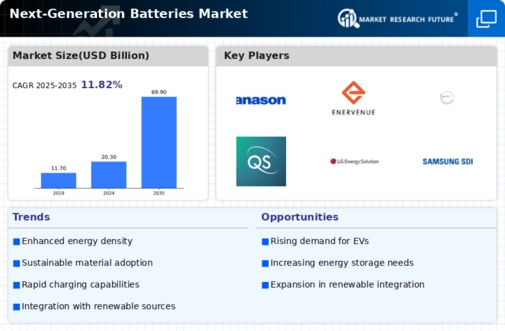

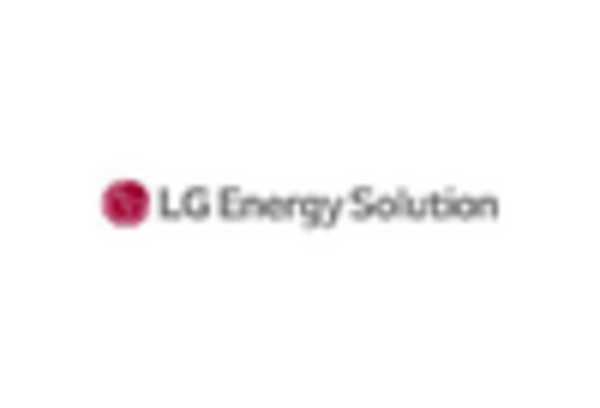
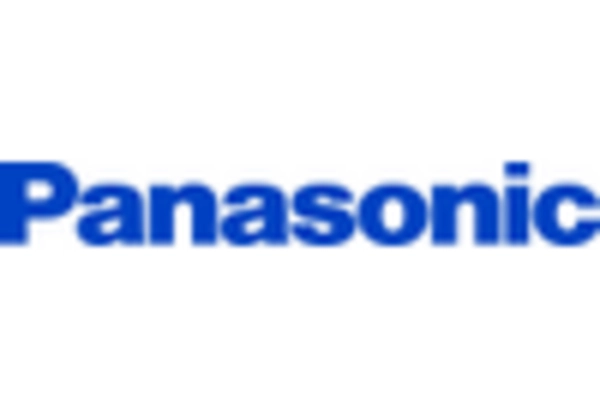
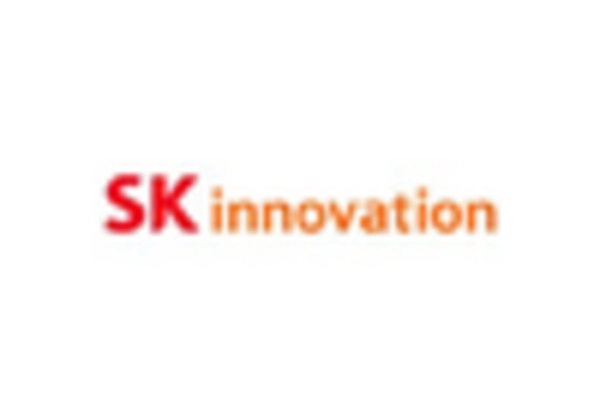
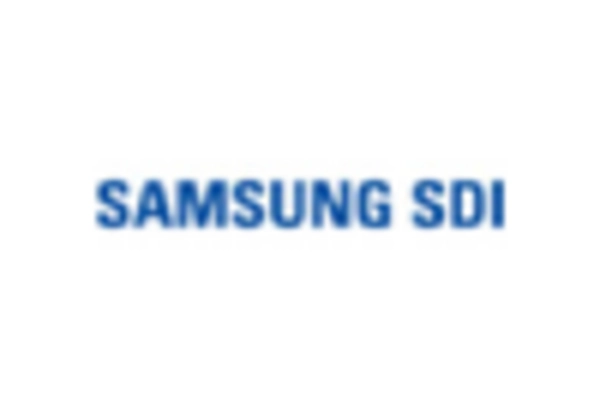
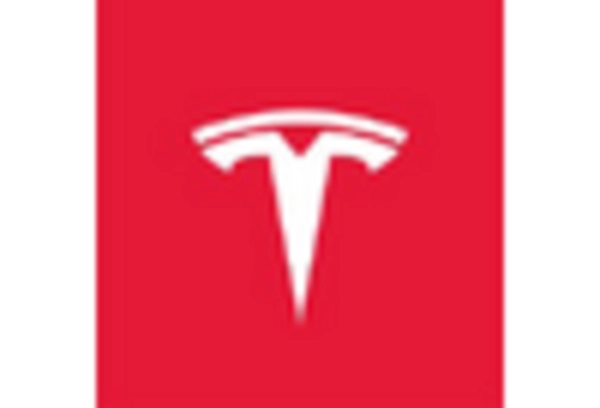









Leave a Comment